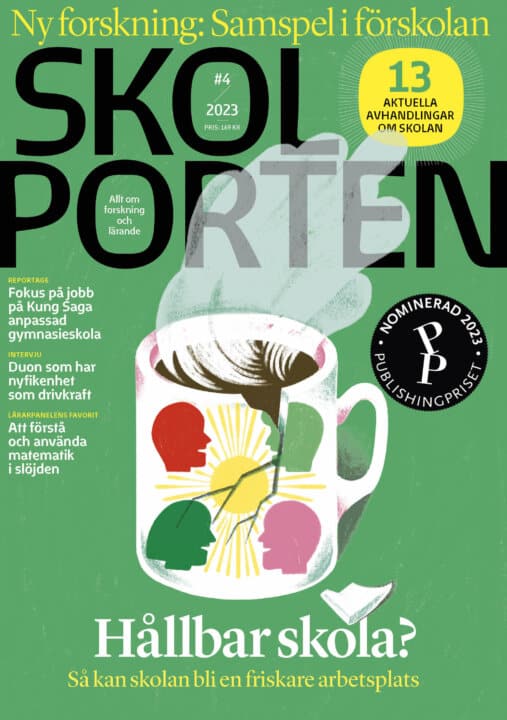Alcohol-related harm among youth in Sweden
Siri Thor har i sin avhandling undersökt bakomliggande aspekter av alkoholrelaterade skador (ARH) bland unga.
Siri Thor
Jonas Landberg, Institutionen för klinisk neurovetenskap, Karolinska Institutet Johan Svensson, Centralförbundet för alkohol- och narkotikaupplysning (CAN) Peter Larm, Stockholm universitet Professor Thor Norström, Stockholm universitet
Docent Martin Stafström, Lunds universitet
Karolinska Institutet
2023-05-26
Alcohol-related harm among youth in Sweden
Alcohol-related harm among youth in Sweden
Background: Compared to before the turn of the millennium, adolescents are now less likely to drink alcohol and to engage in heavy episodic drinking, both in Sweden and in many other countries. However, in societies where alcohol is consumed, alcohol-related harm is almost always present and alcohol consumption is still the leading risk factor for mortality and morbidity among 15–24-year-olds and is related to a wide range of adverse consequences.
Overall aims: The overall aim of the thesis was to explore various previously understudied aspects of the epidemiology of alcohol-related harm (ARH) among young people. To this end, the four included studies focus on the associations of different exposures with the risk for ARH among young people. The exposures include: (i) individual levels and patterns of drinking; (ii) different indicators/measures of socioeconomic status (SES); and (iii) father’s drinking habits. With the intent to explore the mechanism and pathways underlying the above associations, the studies also assess the possible importance of various confounding, mediating and moderating factors.
Data and method: Data for three out of four studies stemmed from a nationwide school survey conducted annually by the Swedish Council for Information on Alcohol and Other Drugs; it is a cross-sectional survey among students ages 15-18 with mainly self-reported data. The outcome self-reported ARH is consistent across the studies and has a skewed distribution prompting the use of negative binomial regressions. Since the respondents in the studies are clustered in school classes (study I, II and III) and in schools (study III) the assumption of independence between observations was violated, which was taken into consideration in each study.
One study was based on a prospective cohort with a study population of Swedish citizens who were born between 1 January 1970 and 1 December 1985 and whose fathers were conscripted for compulsory military training at ages 18–20 in 1969/70. Cox regression models were used to estimate hazard ratios and 95% confidence intervals. Person-time was calculated from the time the individual turned 12 years of age until the first event of substance-related hospitalisation or mortality, reaching age 40 years, death or end of follow-up in 2009.
Results: In study I the overall aim was to examine how the trend in self-reported ARH among young Swedish alcohol consumers has followed the trend in their alcohol consumption during 1995–2012, and to test whether the strength of the association between individual level self-reported alcohol consumption and ARH is affected by the overall level of consumption among youth. The individual-level associations between the indicators of alcohol use and ARH were not significantly affected by changes in the overall mean youth consumption. The trend in mean number of ARH shows a greater association to the variations in prevalence of heavy episodic drinking (HED) than to the trend in overall mean consumption.
In study II the overall aim was to examine how SES among youth is related to HED and ARH using three different indicators of SES. SES of destination (i.e., the students chosen academic orientation of study) was the most stable SES indicator for both outcomes; students in vocational programmes had higher odds of both HED and self-reported ARH compared to students in higher education preparatory programmes. The estimate for SES of the school environment also indicated more ARH in schools with lower-educated parents. After adjusting for volume of alcohol and HED, SES of the school environment still displayed a negative and significant estimate while the estimate for SES of destination became non-significant.
In study III the overall aim was to increase the understanding of the social gradient in ARH among youth, by studying a previously largely overlooked, but disadvantaged group of adolescents. The results indicated a negative social gradient, where the highest level of ARH was found among introductory students, followed by vocational students compared to higher education preparatory students. The associations were attenuated by about half after adjustments for risk factors, however there was still 43% more ARH among students in the introductory programme and 17% more among students in the vocational programme. While HED explained a large part of the excess risk among vocational students, it was a less important factor for introductory students.
In study IV the overall aim was to explore how fathers’ alcohol use is related to the risk for substance-related disorders in their children, during youth and young adulthood. Each indicator of father’s alcohol use was associated with a higher risk for substance-related disorders among children. Risk factors measured in childhood explained roughly between 40-70% of the associations. After adjustments, the highest risk was still found among children of fathers with the most problematic consumption, i.e. who had been apprehended for drunkenness or received an alcohol-related diagnosis. However, there was still a 63% higher risk of substance-related disorders among children whose fathers were in the highest alcohol consumption quintile in comparison to whose fathers did not drink alcohol.
Discussion and conclusion: All studied exposures were significantly associated with ARH. Both individual levels and patterns of drinking and indicators of fathers’ alcohol use remained significantly associated with ARH after adjustment for other explanatory factors. Among the SES indicators, both SES of the school environment and SES of destination/academic orientation showed a negative association with ARH, also after adjustment for other risk factors.
Relaterade länkar

Biologi
 Åk 7–Vux
Åk 7–Vux Hållbar utveckling i förskolan
 Fsk
Fsk 




